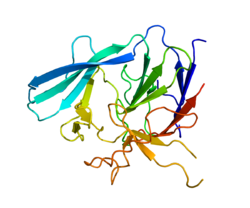| PELI2 | |||||||||||||||||||||||||||||||||||||||||||||||||||
|---|---|---|---|---|---|---|---|---|---|---|---|---|---|---|---|---|---|---|---|---|---|---|---|---|---|---|---|---|---|---|---|---|---|---|---|---|---|---|---|---|---|---|---|---|---|---|---|---|---|---|---|
 | |||||||||||||||||||||||||||||||||||||||||||||||||||
| |||||||||||||||||||||||||||||||||||||||||||||||||||
| Identifiers | |||||||||||||||||||||||||||||||||||||||||||||||||||
| Aliases | PELI2, pellino E3 ubiquitin protein ligase family member 2 | ||||||||||||||||||||||||||||||||||||||||||||||||||
| External IDs | OMIM: 614798; MGI: 1891445; HomoloGene: 41431; GeneCards: PELI2; OMA:PELI2 - orthologs | ||||||||||||||||||||||||||||||||||||||||||||||||||
| |||||||||||||||||||||||||||||||||||||||||||||||||||
| |||||||||||||||||||||||||||||||||||||||||||||||||||
| |||||||||||||||||||||||||||||||||||||||||||||||||||
| |||||||||||||||||||||||||||||||||||||||||||||||||||
| Wikidata | |||||||||||||||||||||||||||||||||||||||||||||||||||
| |||||||||||||||||||||||||||||||||||||||||||||||||||
Protein pellino homolog 2 is a protein that in humans is encoded by the PELI2 gene.
References
- ^ GRCh38: Ensembl release 89: ENSG00000139946 – Ensembl, May 2017
- ^ GRCm38: Ensembl release 89: ENSMUSG00000021846 – Ensembl, May 2017
- "Human PubMed Reference:". National Center for Biotechnology Information, U.S. National Library of Medicine.
- "Mouse PubMed Reference:". National Center for Biotechnology Information, U.S. National Library of Medicine.
- Resch K, Jockusch H, Schmitt-John T (Apr 2001). "Assignment of homologous genes, Peli1/PELI1 and Peli2/PELI2, for the Pelle adaptor protein Pellino to mouse chromosomes 11 and 14 and human chromosomes 2p13.3 and 14q21, respectively, by physical and radiation hybrid mapping". Cytogenet Cell Genet. 92 (1–2): 172–4. doi:10.1159/000056895. PMID 11306823. S2CID 83911010.
- Strelow A, Kollewe C, Wesche H (Jul 2003). "Characterization of Pellino2, a substrate of IRAK1 and IRAK4". FEBS Lett. 547 (1–3): 157–61. doi:10.1016/S0014-5793(03)00697-5. PMID 12860405.
- "Entrez Gene: PELI2 pellino homolog 2 (Drosophila)".
Further reading
- Lim J, Hao T, Shaw C, et al. (2006). "A protein-protein interaction network for human inherited ataxias and disorders of Purkinje cell degeneration". Cell. 125 (4): 801–14. doi:10.1016/j.cell.2006.03.032. PMID 16713569.
- Gerhard DS, Wagner L, Feingold EA, et al. (2004). "The status, quality, and expansion of the NIH full-length cDNA project: the Mammalian Gene Collection (MGC)". Genome Res. 14 (10B): 2121–7. doi:10.1101/gr.2596504. PMC 528928. PMID 15489334.
- Liu Y, Dong W, Chen L, et al. (2004). "BCL10 mediates lipopolysaccharide/toll-like receptor-4 signaling through interaction with Pellino2". J. Biol. Chem. 279 (36): 37436–44. doi:10.1074/jbc.M400241200. PMID 15213237.
- Jensen LE, Whitehead AS (2003). "Pellino2 activates the mitogen activated protein kinase pathway". FEBS Lett. 545 (2–3): 199–202. doi:10.1016/S0014-5793(03)00533-7. PMID 12804775.
- Strausberg RL, Feingold EA, Grouse LH, et al. (2003). "Generation and initial analysis of more than 15,000 full-length human and mouse cDNA sequences". Proc. Natl. Acad. Sci. U.S.A. 99 (26): 16899–903. Bibcode:2002PNAS...9916899M. doi:10.1073/pnas.242603899. PMC 139241. PMID 12477932.
- Yu KY, Kwon HJ, Norman DA, et al. (2002). "Cutting edge: mouse pellino-2 modulates IL-1 and lipopolysaccharide signaling". J. Immunol. 169 (8): 4075–8. doi:10.4049/jimmunol.169.8.4075. PMID 12370331.
This article on a gene on human chromosome 14 is a stub. You can help Misplaced Pages by expanding it. |




